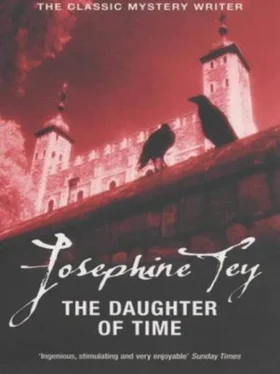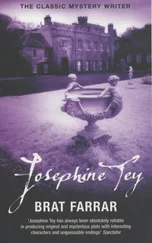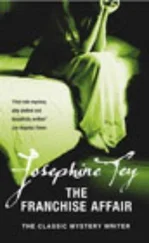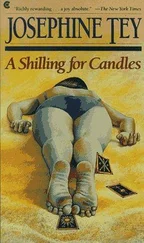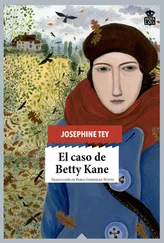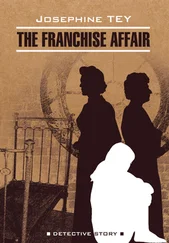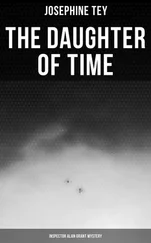‘Freeman’s no idiot, take it from me,’ the Inspector broke in. ‘A very wide-awake wide boy he is, believe me.’
‘I didn’t mean that. I mean that the idiot is irresponsible. The idiot is the standard of irresponsibility. All those twelve men in that parade were thirty-ish, but only one had an irresponsible face. So I picked him at once.’
After that it had become a mild joke at the Yard that Grant could ‘pick them at sight’. And the Assistant Commissioner had once said teasingly: ‘Don’t tell me that you believe that there is such a thing as a criminal face, Inspector.’
But Grant had said no, he wasn’t as simple as that. ‘If there was only one kind of crime, sir, it might be possible; but crimes being as wide as human nature, if a policeman started to put faces into categories he would be sunk. You can tell what the normal run of disreputable women look like by a walk down Bond Street any day between five and six, and yet the most notorious woman in London looks like a cold saint.’
‘Not so saintly of late; she’s drinking too much these days,’ the A.C. had said, identifying the lady without difficulty; and the conversation had gone on to other things.
But Grant’s interest in faces had remained and enlarged until it became a conscious study. A matter of case records and comparisons. It was, as he had said, not possible to put faces into any kind of category, but it was possible to characterise individual faces. In a reprint of a famous trial, for instance, where photographs of the principal actors in the case were displayed for the public’s interest, there was never any doubt as to which was the accused and which the judge. Occasionally, one of the counsel might on looks have changed places with the prisoner in the dock – counsel were after all a mere cross-section of humanity, as liable to passion and greed as the rest of the world, but a judge had a special quality; an integrity and a detachment. So, even without a wig, one did not confuse him with the man in the dock, who had had neither integrity nor detachment.
Maria’s James, having been dragged from his ‘cubby-hole’, had evidently enjoyed himself, and a fine selection of offenders, or their victims. kept Grant entertained until The Midget brought his tea. As he tidied the sheets together to put them away in his locker his hand came in contact with one that had slipped off his chest and had lain all the afternoon unnoticed on the counterpane. He picked it up and looked at it.

King Richard III
It was the portrait of a man dressed in the velvet cap and slashed doublet of the late fifteenth century. A man about thirty-five or thirty-six years old, lean and clean shaven. He wore a rich jewelled collar, and was in the act of putting a ring on the little finger of his right hand. But he was not looking at the ring. He was looking off into space.
Of all the portraits Grant had seen this afternoon this was the most individual. It was as if the artist had striven to put on canvas something that his talent was not sufficient to translate into paint. The expression in the eyes – that most arresting and individual expression – had defeated him. So had the mouth: he had not known how to make lips so thin and so wide look mobile, so the mouth was wooden and a failure. What he had best succeeded in was in the bone structure of the face: the strong cheekbones, the hollows below them, the chin too large for strength.
Grant paused in the act of turning the thing over, to consider the face a moment longer. A judge? A soldier? A prince? Someone used to great responsibility, and responsible in his authority. Someone too-conscientious. A worrier; perhaps a perfectionist. A man at ease in a large design, but anxious over details. A candidate for gastric ulcer. Someone, too, who had suffered ill-health as a child. He had that incommunicable, that indescribable look that childhood suffering leaves behind it; less positive than the look on a cripple’s face, but as inescapable. This the artist had both understood and translated into terms of paint. The slight fullness of the lower eyelid, like a child that has slept too heavily; the texture of the skin; the old-man look in a young face.
He turned the portrait over to look for a caption.
On the back was printed: Richard the Third. From the portrait in the National Portrait Gallery. Artist Unknown.
Richard the Third.
So that was who it was. Richard the Third. Crouchback. The monster of nursery stories. The destroyer of innocence. A synonym for villainy.
He turned the paper over and looked again. Was that what the artist had tried to convey when he had painted those eyes? Had what he had seen in those eyes been the look of a man haunted?
He lay a long time looking at that face; at those extraordinary eyes. They were long eyes, set close under the brows; the brows slightly drawn in that worried, over-conscientious frown. At first glance they appeared to be peering; but as one looked one found that they were in fact withdrawn, almost absent-minded.
When The Midget came back for his tray he was still staring at the portrait. Nothing like this had come his way for years. It made La Giaconda look like a poster.
The Midget examined his virgin teacup, put a practised hand against the teapot’s tepid cheek, and pouted. She had better things to do, she conveyed, than bring him trays for him to ignore.
He pushed the portrait at her.
What did she think of it? If that man were her patient what would be her verdict?
‘Liver,’ she said crisply, and bore away the tray in heel-tapping protest, all starch and blonde curls.
But the surgeon, strolling in against her draught, kindly and casual, had other views. He looked at the portrait, as invited, and said after a moment’s interested scrutiny:
‘Poliomyelitis.’
‘Infantile paralysis?’ Grant said; and remembered all of a sudden that Richard III had a withered arm.
‘Who is it?’ the surgeon asked.
‘Richard the Third.’
‘Really? That’s interesting.’
‘Did you know that he had a withered arm?’
‘Had he? I didn’t remember that. I thought he was a hunchback.’
‘So he was.’
‘What I do remember is that he was born with a full set of teeth and ate live frogs. Well, my diagnosis seems to be abnormally accurate.’
‘Uncanny. What made you choose polio?’
‘I don’t quite know, now that you ask me to be definitive, just the look of the face, I suppose. It’s the look one sees on the face of a crippled child. If he was born hunchbacked that probably accounts for it and not polio. I notice the artist has left out the hump.’
‘Yes. Court painters have to have a modicum of tact. It wasn’t until Cromwell that sitters asked for “warts and all”.’
‘If you ask me,’ the surgeon said, absentmindedly considering the splint on Grant’s leg, ‘Cromwell started that inverted snobbery from which we are all suffering today. “I’m a plain man, I am; no nonsense about me.” And no manners, grace, or generosity, either.’ He pinched Grant’s toe with detached interest. ‘It’s a raging disease. A horrible perversion. In some parts of the States, I understand, it’s as much as a man’s political life is worth to go to some constituencies with his tie tied and his coat on. That’s being stuffed-shirt. The beau ideal is to be one of the boys. That’s looking very healthy,’ he added, referring to Grant’s big toe, and came back of his own accord to the portrait lying on the counterpane.
‘Interesting,’ he said, ‘that about the polio. Perhaps it really was polio, and that accounts for the shrunken arm.’ He went on considering it, making no movement to go. ‘Interesting, anyhow. Portrait of a murderer. Does he run to type, would you say?’
Читать дальше
